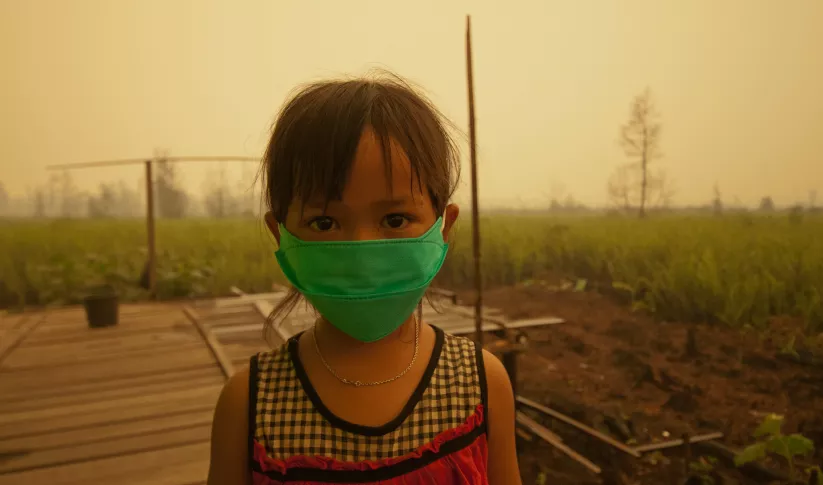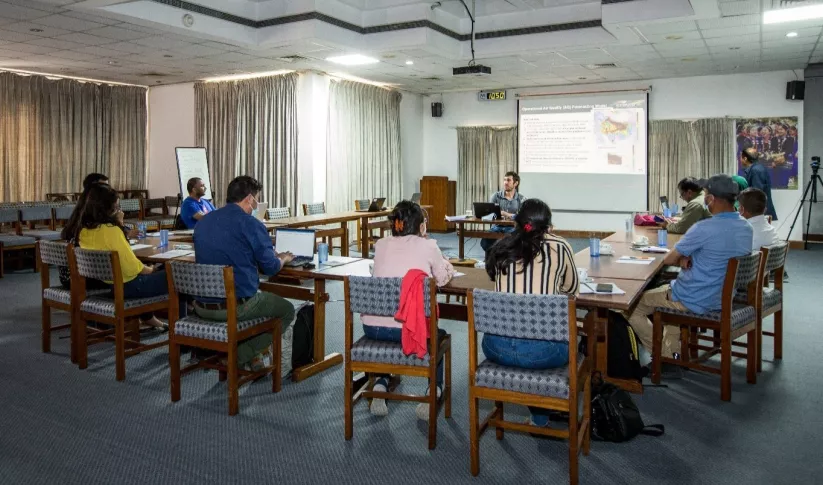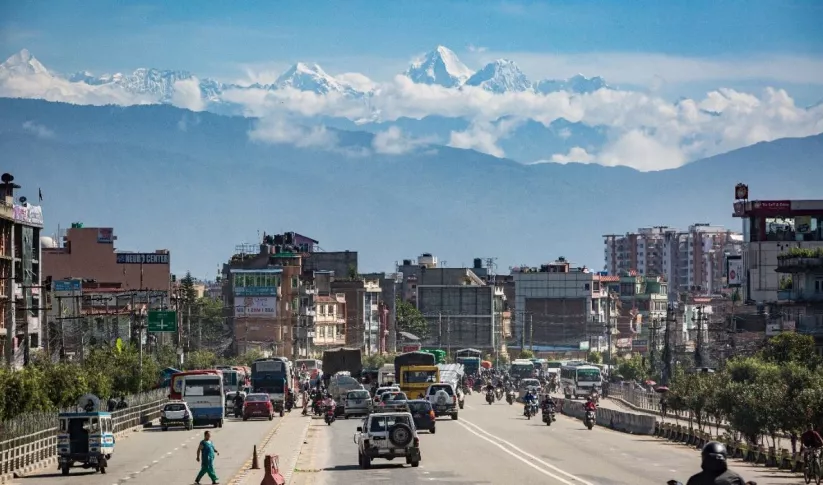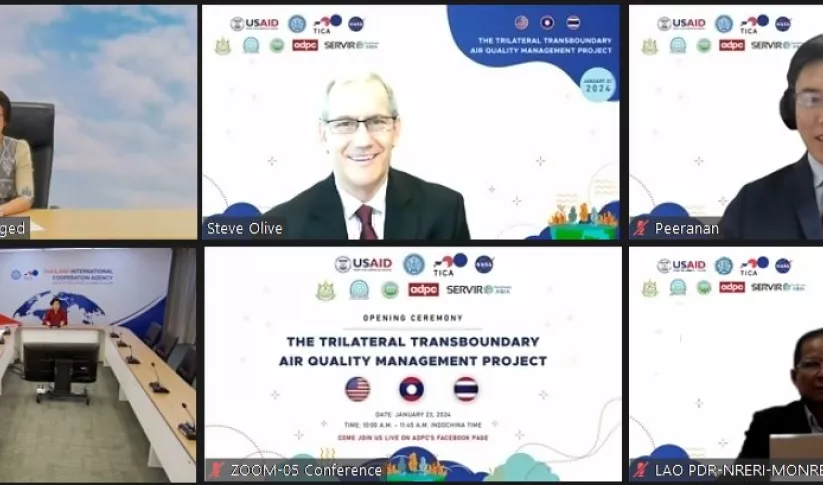Clean air is essential to a healthy population, a healthy environment, and a healthy economy. Globally, however, poor air quality is linked to millions of premature deaths each year. Industrialization, vehicle emissions, agricultural burning, and forest fires are major drivers of poor air quality. Climate change is increasing the frequency and intensity of heat waves and extreme heat which can further exacerbate poor air quality. Similarly, droughts can facilitate catastrophic forest fires which in turn can compromise air quality and public health.
SERVIR uses Earth observations to help decision-makers map sources of air pollution, track how this pollution moves within and across borders, and study how it affects people’s health. Earth observations are also used to measure rainfall and air temperature and improve model forecasts to provide early warning of threats to public health. Together, these warnings are used to inform early actions to reduce or prevent negative impacts on vulnerable populations.
SERVIR works with regional and local partners to support vital air quality monitoring and public health services. Air quality monitoring services can inform locally-led action designed to reduce the negative health consequences of air pollution. These actions can include air quality warnings and emission reduction policies.
In addition, satellite data and forecasts can be leveraged in support of improved human health beyond air quality: other data-driven health opportunities include improved forecasts of the distribution of malaria-carrying mosquitoes and other vector-borne diseases. By predicting where vector or water-borne disease outbreaks are likely to occur, there is opportunity to work with local control programs so that they are better prepared for and able to respond to fluctuations in disease case loads.
-
Air Quality Monitoring for Sustainable Landscapes and Better Human Health

Air Quality Monitoring for Sustainable Landscapes and Better Human Health aims to reduce greenhouse gas emissions, improve climate resilience and promote better human health by using air quality data for informing and regulating the management of agricultural burning.
-
Monitoring and Prediction of Air Quality and Visibility Reductions in HKH

This service improves air quality monitoring through a web-based dashboard that was developed that utilizes publicly available observation data, satellite-based remote sensing products, and atmospheric models.
-
SERVIR Air Quality Explorer Gets An Upgrade Through Crowdsourcing

Air quality is a significant challenge for Hindu Kush Himalaya (HKH), a high mountain region of South Asia, where it frequently reaches unhealthy to hazardous levels. New SERVIR HKH web and mobile tools developed through crowdsourcing aim to help public health and environmental managers monitor and forecast air quality for this region.
-
USAID, TICA, & Laos MONRE Launch Trilateral Partnership to Improve Air Quality through SERVIR Southeast Asia

The USAID Regional Development Mission for Asia and Thailand International Cooperation Agency, along with other regional partner in Thailand in Lao PDR launched today a trilateral Transboundary Air Quality Management Project.
-
Using Artificial Intelligence to Boost Air Quality in Southeast Asia

Governments in Southeast Asia can leverage the benefits of artificial intelligence (AI) through an enhanced tool, developed by SERVIR Southeast Asia (SERVIR SEA), to estimate the environmental and health impacts of air pollution in their countries and implement effective responses.


